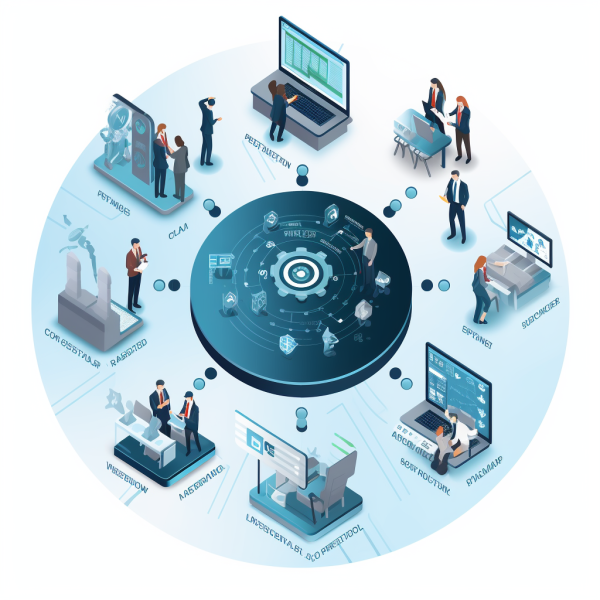Understanding Endpoint Detection and Response (EDR) vs. Managed Detection and Response (MDR)
In today's rapidly evolving threat landscape, organizations face increasingly sophisticated cyber threats from various sources. To effectively protect your digital assets, it's crucial to understand the key differences between endpoint detection and response (EDR) and managed detection and response (MDR) solutions. At CyberGrade Technologies, our mission is to empower businesses with the knowledge and tools necessary to mitigate risks effectively. In this blog post, we explore the distinctions between EDR and MDR, shedding light on their unique functionalities and their significance in bolstering your organization's cybersecurity posture.
Endpoint Detection and Response (EDR)
EDR is a powerful tool designed to monitor and respond to security incidents at the endpoint level. It provides real-time visibility into endpoint activities, such as user behavior, system processes, and network connections. EDR solutions leverage advanced technologies like behavioral analysis, machine learning, and threat intelligence to detect and respond to potential threats. Key features of EDR include:
Threat Detection: EDR solutions proactively detect and alert on suspicious activities, anomalies, or indicators of compromise (IOCs) that may indicate a security incident. By continuously monitoring endpoints, EDR enables early threat detection and swift incident response.
Investigation and Forensics: EDR solutions provide detailed visibility into security incidents, allowing security teams to investigate the root cause, track attack paths, and perform digital forensics. This helps organizations understand the nature of the threat and develop effective mitigation strategies.
Incident Response: EDR facilitates rapid incident response by enabling security teams to quarantine compromised endpoints, contain the spread of threats, and remediate affected systems. It automates response actions and empowers security analysts with the necessary information to make informed decisions.
Managed Detection and Response (MDR)
MDR goes beyond EDR by offering a comprehensive security service that combines technology, expertise, and human intelligence. MDR providers like CyberGrade Technologies offer continuous monitoring, threat detection, incident response, and proactive threat hunting. Key features of MDR include:
24/7 Monitoring: MDR services provide round-the-clock monitoring, leveraging advanced security tools and experienced security analysts. This ensures rapid detection of security incidents and timely response to minimize the impact of cyber threats.
Threat Hunting: MDR providers actively hunt for threats by analyzing logs, network traffic, and endpoint data. They proactively search for indicators of compromise and potential vulnerabilities, allowing organizations to stay one step ahead of attackers.
Incident Response and Remediation: MDR combines automated incident response capabilities with human expertise. When a security incident occurs, MDR analysts investigate and respond to the threat, guiding organizations through the remediation process and providing recommendations for future prevention.
Choosing the Right Approach
EDR and MDR serve different purposes and cater to varying organizational needs. While EDR provides in-depth endpoint visibility and response capabilities, MDR offers a more holistic approach with 24/7 monitoring, threat hunting, and expert guidance. The right choice depends on factors such as organizational size, security team capabilities, and budget.
Conclusion
As the cybersecurity landscape continues to evolve, organizations must proactively address the risks posed by various sources. Understanding the distinctions between EDR and MDR is crucial in making informed decisions about your cybersecurity strategy. EDR provides granular endpoint visibility and response capabilities, while MDR offers comprehensive monitoring, threat hunting, and incident response services.
At CyberGrade Technologies, we specialize in empowering businesses with cutting-edge cybersecurity solutions. Our team of experts can help you navigate the complexities of EDR, MDR, and other security technologies to build a robust defense against emerging threats. Contact us today to learn more about how our tailored solutions can enhance your organization's cybersecurity posture and protect your digital assets from diverse sources of risk.
Remember, by staying educated and investing in the right cybersecurity measures, you can safeguard your organization's reputation, intellectual property, and customer trust in the face of evolving threats. Together, let's fortify your digital resilience and create a secure future.

